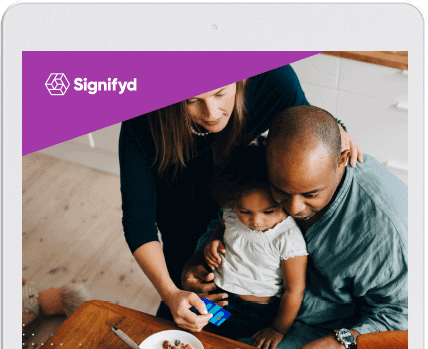As we begin month three of life with COVID-19, can we all stipulate that there is no such thing as “the new normal?”
Nothing is working as it used to, but that doesn’t mean it’s not working. And so, for retailers living in a world of easing shelter-at-home orders that means buy online, pick up at the curb — BOPAC.
It’s all about BOPAC now, as the last regulatory holdouts have allowed non-essential stores to open, generally under certain conditions. In much of the U.S. that means a limited number of shoppers in the store or no shoppers in the store at all.
That has set off a scramble among retailers to learn how to offer curbside pick up and to launch or enhance their BOPAC game. And boy, have they picked it up.
Data from Signifyd’s Commerce Network shows that retailers are seeing a 300% increase in BOPAC sales compared to pre-pandemic days. And lest you think curbside service was a common practice among retailers before the coronavirus became part of our everyday lives, Digital Commerce 360 reports that as of last year, only 17 of the Internet Retailer Top 1000 offered BOPAC.
Why? Because the curbside pickup process is hard. Even figuring out how to offer curbside pickup is hard. Retail consultant Shelley Kohan, who teaches at Syracuse University and FIT, explains in the brief video interview below.
“There’s a lot that has to go into curbside pickup,” Kohan said in the recent interview. “There needs to be inventory visibility. There needs to be a space set aside for curbside pickup. There’s Logistics. There’s training. There’s coordination of picking and getting the product ready. So there’s a lot that goes on behind the scenes to make that curbside pickup very seamless.”
Offering curbside pickup is particularly challenging for smaller retailers
The move might be the hardest for smaller retailers, mom and pop shops and slightly larger, who never considered offering curbside pickup until now. Angela Tsay is the creative director at Oaklandish, an Oakland, California, store that sells designer t-shirts and now face masks bearing the city’s name and nicknames. As the store launched curbside pickup, she told the Mercury News of San Jose that sales are down 75%.
“Being able to offer curbside pickup is not any retail store’s salvation,” Tsay told the Mercury.
Across San Francisco Bay, at the Leaf & Petal boutique, owner Judy Ohki told the Silicon Valley-based news organization that she was keeping her expectations low.
“I think it will help some,” she said, “but I’m not going to kid myself. It’s not going to be what we’re used to.”
Nevertheless, BOPAC is going to happen and it’s going to happen fast, said Montreal-based retail strategist Carl Boutet. He pointed to Canadian Tire, a huge seller of hardware, sports, leisure, home and automotive products, that he says has experimented off and on with curbside pickup. The experimental days are over, Boutet said, and the iconic retailer is now offering the service at many stores.
You can see our BOPAC interview with Boutet in the video below.
“That’s part of the great acceleration,” Boutet said in the interview. “Especially the larger retailers have all been thinking about this, how they can fulfill on this. And now it’s just like, OK, that six-, 12-, 24-month plan? We’re doing it in like six, 12, 24 days right now. They’re just trying to catch up and they realize how complicated it is.”
It takes a thoughtful plan to offer curbside pickup
It’s complicated by the fact that retailers need to designate a pickup area. They need to arrange their store, so that there are dedicated areas for organizing the orders that someone has to pick and place in the dedicated area. There is a need for seamless communication with the customer who will pick up the order. There’s a need to have the right number of people ready to run orders out, when you don’t know exactly who is coming for what, when.
And there is the need to verify that the person who is picking up the order is the rightful owner of the order and that the credit card used to pay is legitimate.
“We’re seeing that, unfortunately, as much as everything grows, the bad side grows just as much as the good,” Boutet said. “Challenges around ecom are often tied to economic challenges where return rates and things like that really hammer the margins. So fraud is obviously something that has to be front-and-center. Yes I’m ecstatic about the 30% increase or 50% increase in my ecommerce numbers, but if I’m getting a 30% or 50% increase in my fraud numbers…”
So, how do you offer curbside pickup? A few tips:
- Be obsessed with communication. Start on your website, setting clear expectations on your curbside pickup process. Follow up orders immediately with a confirmation email that includes pickup instructions and an accurate estimate of when the order will be ready. Politely require customers to wear face masks at pickup. Consider explaining that the requirement is for the good of both customers and your employees. Follow up with an email when the order actually is ready. Repeat all the instructions. Including asking customers to have the confirmation email with them when they arrive.
- Analyze your risk management strategy and tools. Consider an automated fraud and consumer abuse solution, like Signifyd, which combines big data and machine learning to instantly sift legitimate from fraudulent orders. BOPAC orders come with no delivery address, which means fraud reviews need to be conducted without some key pieces of data to confirm identity. The orders also must be processed quickly to maintain the promise of convenience that comes with curbside pickup.
- Designate a dedicated pickup area. If possible, a section of clearly marked parking spaces works better than literally lining cars up along the curb. If you do rely on a curbside line, mark the lane clearly and use signs to instruct drivers to stay in their cars throughout the pickup process.
- Signs, signs, signs. Be sure signs are easily seen and clear in their messaging. Include the number to call or text with order information upon arrival. If possible, post a separate customer service number for complications.
- Identify and train dedicated associates to work on BOPAC. Depending on your business’s size and order volume, you might consider having the dedicated employees work only on BOPAC orders.
- Be sure employees who deliver orders to vehicles are properly wearing face coverings. Instruct them to confirm orders through a closed car windows and to maintain social distancing even when sharing outdoor space with each other and customers.
- Be flexible. You cannot plan for everything, particularly during an unprecedented pandemic. You might need to zig and zag. Consider each day, or each hour even, a test. Execute, observe, adjust and execute again.
- Treat your employees working BOPAC and those supporting them by working in-store like the heroes they are. Customers by-and-large appear to be grateful for the opportunity to get what they need — or want. Your associates more than ever are your biggest brand ambassadors.
- Breathe. It’s a stressful time. Yes, biggest understatement ever. Launching a new initiative only adds to the stress. Things will go wrong. Customers, however, appear ready to accept some hiccups. When things do go wrong, make things right for the customer involved. Consider gift cards, discounts or some other thoughtful gesture.
It’s a lot. But getting BOPAC right will pay off. Consultant Kohan pointed to Target and a recent earnings call she was on.
“There’s always been this idea that, well, if you do curbside pickup, then the customer doesn’t come in the store and they spend less money,” Kohan said. “Actually, what Target found is that by doing curbside pickup, it’s so convenient that customers are actually stopping by more. So, their shopper frequency went up, because customers are loving the convenience of being able to order it, pick it up and go.”
And that may be the biggest lesson learned in retailers’ rush to adopt buy online, pick up at curbside: This isn’t just an initiative to get through the pandemic. This is an initiative that propels retailers into the future of omnichannel.
Photo by Mike Cassidy
Looking for the best ways to offer your customers curbside pickup? We can help.












